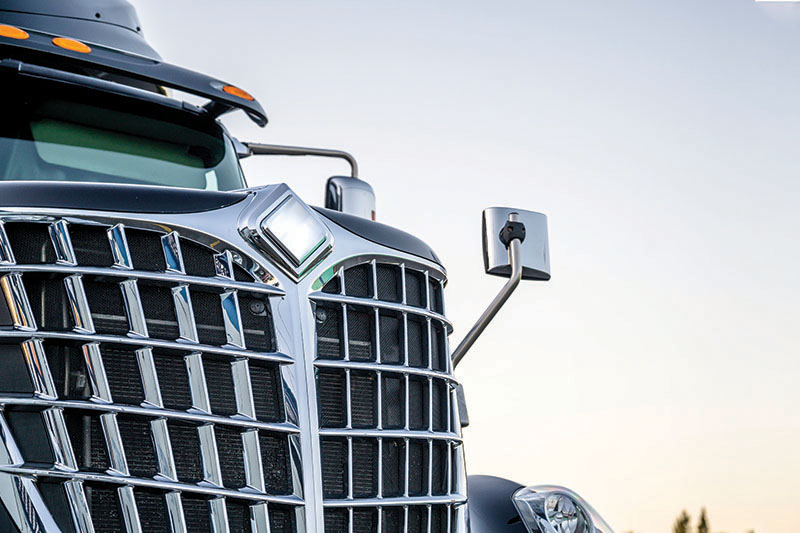Trucking: High-capacity solutions beyond adding a second trailer
We’ve seen many changes reshaping the rail, ocean and air modes that are being driven by innovations in technology and the rapid growth of the interconnected “digital” supply chain.
Today, there’s better visibility, more flexibility and consolidation enabled by the Internet and mobile devices that allow a small team to control hundreds of resources. Trains, ocean vessels and air cargo aircraft are all bigger, faster and controlled by fewer people than ever before. And it’s only a matter of time before the introduction of more artificial intelligence (AI) will hasten the trend toward pilotless “mega” trains, ships and airplanes.
What then of the 18-wheel highway truck? The trucking industry still has tens of thousands of independent operators with one or two trucks in the firm—with the management team also driving 500 miles a day. And even if the funds were available, there would not be double-stacked trucks or even mega trucks pulling many trailers because ongoing regulation and highway infrastructure simply prohibit mega vehicles.
There’s a technical limit to what we can carry with one operator, right? Well, not so fast. There are glimpses of new, high-capacity solutions for trucks beyond just adding a second trailer to create a “tandem” truck.
The other modes have broadened the definition of “capacity” to include utilization of all related resources—people, processes and technology—in order to bring in more revenue at a relatively lower incremental cost. If you can lower your ton-mile cost and increase utilization time on your resources, you have increased capacity. Sell the added capacity and you have more revenue at a higher margin, thus improving the operating ratio (OR).
Some airlines, faced with passenger flight reductions due to the pandemic, have taken out their passenger baggage areas, and in some cases passenger seats, to increase cargo capacity—same aircraft body, smaller crew, faster turnarounds and more ton-miles. Not so easy to do with a standard dry tractor and van.
So, how then do innovators accomplish this on our highways? We’ve traditionally seen driver “teams” operate trucks for longer distances. These require larger sleeper cabs and the recruitment of compatible drivers. This has a cost and is often reflected in premium rates for shippers.
But what if one remote operator could control multiple trucks from a central location operating around the clock? Consider the fact that the U.S. Air Force is controlling drones halfway around the world from Florida. If trucks had no hourly restrictions and smaller cabs, the ton-mile cost reductions would be dramatic.
On processes, the cost of hiring, managing, dispatching, training and drug-testing drivers is substantial. With more remote operation, a layer of management could come out and be replaced by AI scheduling and monitoring equipment.
Technology is already making an impact on the efficiency of 18-wheelers. Electronic engine controls and driver logs of today will be replaced by all-electric, AI controlled vehicles that have far fewer accidents, thus allowing for higher weight limits and even longer tandems.
Beyond that are “trains” of multiple driverless trucks running in a synchronized line promising even more single shipment capacity to shippers. Today, people with vision are still pushing us forward even in the most challenging times. What is your trucking company investing in?

Article Topics
Motor Freight News & Resources
April retail sales are mixed, reports Commerce and NRF Following USTR review, White House announces tariff increases on certain U.S.-bound imports from China LM reader survey drives home the ongoing rise of U.S.-Mexico cross-border trade and nearshoring activity Last-Mile Evolution: Embracing 5 Trends for Success A buying guide to outsourcing transportation management Harness Network Design for Supply Chain Success New Ryder analysis takes a close look at obstacles in converting to electric vehicles More Motor FreightLatest in Logistics
ALAN opens up its nominations for 2024 Humanitarian Logistics Awards U.S.-bound import growth remains intact in April, reports Descartes Looking at a reshoring history lesson NTSB: Ship lost power twice before slamming into Baltimore bridge, closing port ISM May Semiannual Report points to growth in 2024, at a reduced rate April retail sales are mixed, reports Commerce and NRF LM Podcast Series: S&P Global Market Intelligence’s Rogers assesses 2024 import landscape More LogisticsSubscribe to Logistics Management Magazine

Find out what the world's most innovative companies are doing to improve productivity in their plants and distribution centers.
Start your FREE subscription today.
May 2024 Logistics Management

Latest Resources
















